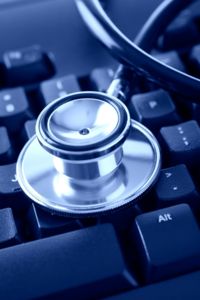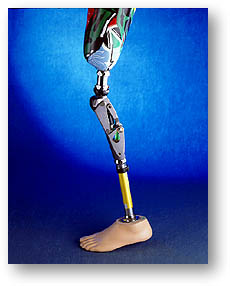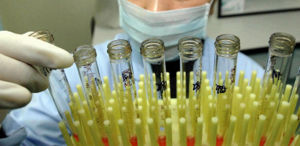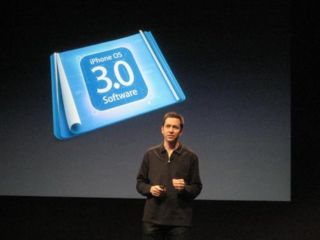User:Vtaylor/CIS2/Health and medicine/
Contents
- 1 Health, Medicine, and Technology
- 2 Positives of Evolving Medical Technology
- 3 Negatives of Evolving Medical Technology
- 4 Technology Breaking into The Medical Field
- 5 References
Health, Medicine, and Technology
Where will the medical industry be in the next 3 to 5 years? Why types of devices, services, and equipment will be used or invented to revolutionize the industry? In many areas the medical field has been ahead of the curve in regards to technology and in many areas it is lacking. Technology affects all individuals differently and not everyone is accepting of moving forward and putting all of their trust in to a computer driven machine or medicine that is on the breaking edge of discovery. Many people, however, are supporters of the advancement of technology in the medical field and hope that medical practices will become universal across the globe and beyond.
Positives of Evolving Medical Technology
Where is This Happening?
The advancements in the medical field can be seen everywhere you look around. The x-rays provided at the dentist are available only from the advancement of medical science and would not have been available a hundred years ago. With the discovering of the microchip and automated manufacturing an even bigger explosion of new discoveries have happened in the medical field that could not have even been imagined twenty-five years ago. Which makes us ask what will we see in the next twenty-five years of this century?
Negatives of Evolving Medical Technology
Where is This Happening?
On the whole globe this happening though population rates tend to decrease in more industrialized countries the amount of people that are still alive who wouldn't have been when medical technology was but a dream have helped leave our planet strained. The idea of overpopulation is quite the topic of ethical debate. Should people be able to live longer if it means the future for the many will be unlikely? Can a government enforce a restriction on the amount children one can have? Can we neglect our human nature to want to survive?
- http://www.cnn.com/2007/TECH/science/09/25/overpopulation.overview/index.html
Technology Breaking into The Medical Field
Prosthetics and Organ Replacement
A prosthetic is an artificial replacement part for a limb or organ. They can replace a variety of body parts from a leg to your heart. In the past century prosthetic research and development has had great growth and the future holds great promise for further development.
Who is Doing This?
Mostly Universities are leading the advancement of prosthetic and replacement organ research. From Brown University to the University of Twente researchers across the world are coming up with new breakthroughs everyday. Also the Defense department has had some part in the prosthetic research due to the number of amputees that are a result of war. The advancement of prosthetic technology many soldiers are able to return to duty.
How Are They innovating?
Research at Brown has led to the creation of a new knee/ankle joint that can "measure force, position and movement and feed the data to an onboard microprocessor."[1]
Also due to evolving technology prosthetics have been able to become more maneuverable and responsive to an amputee's needs. As of now users can flex certain muscles to send signals to the chips to activate in turn the prosthestics but in the future doctor's will be able to integrate it so amputee's can send signals to their prosthetic limbs using their mind.<br
Organ Donations And Stem Cell Research
Each day, about 77 people receive organ transplants. However, 19 people die each day waiting for transplants that can't take place because of the shortage of donated organs.
Stem cells can develop into different cell types. They may offer a renewable source of replacement cells to treat diseases, conditions, and disabilities.
Who is Doing This?
In the United States and around the globe, a shortage is growing. This shortage is not of doctors or of medical facilities but it is the number of organs donated for transplantation. Organ donors are people who have designated their consent to donate vital organs after death. It seems as if the people who are deceased or doing more of the donating than the living One donor can save up to eight lives and enhance the lives of 50 others.
Stem cell have the remarkable potential to develop into many different cell types in the body during early life and growth. Laboratory studies of stem cells enable scientists and researchers to learn about the cells essential properties and what makes them different from specialized cell types.
How Will There be Innovation?
The greatest potential for regenerative medicine lies in scientists’ ability to tap into the process of cell separation and development. This can only be achieved by tracing the development of human cells from the very beginning. To do so, scientists need to conduct research on embryonic stem cells so that they can discover how these all-purpose cells can change into any one of the more than 200 different cell types in the human body. Moreover, by studying the development of embryonic stem cells scientists will be able to discover how the human genome goes about manifesting itself and creating unique individual persons. These efforts will provide us with insights into human development, how it can go wrong and how it can be fixed. Embryonic stem cells must be studied so that scientists can learn more about developmental biology. It is a longstanding research pattern to study failures of development by determining when, where, and how genes malfunction.
The demand for donor organs drastically exceeds the supply. Ironically, in some instances medical innovations have contributed to the shortage. Improvements in surgical technique, in the preservation of organs and in anti-rejection therapy have opened up the live-saving option of organ transplantation to thousands more patients each year. Improvements in the care of patients with advanced chronic illness have also boosted the numbers of potential organ recipients. In the United States, for example, 63,782 patients were on the National Transplant Waiting List on June 30, 2008. Despite this need, only 20,961 transplants were performed the previous year because organs were available from just 9,913 donors.
How Will This Affect The Future?
The demand for donor organs drastically exceeds the supply. Ironically, in some instances medical innovations have contributed to the shortage. Improvements in surgical technique, in the preservation of organs and in anti-rejection therapy have opened up the live-saving option of organ transplantation to thousands more patients each year. Improvements in the care of patients with advanced chronic illness have also boosted the numbers of potential organ recipients. In the United States, for example, 63,782 patients were on the National Transplant Waiting List on June 30, 2008. Despite this need, only 20,961 transplants were performed the previous year because organs were available from just 9,913 donors.
The bottom line is that embryonic stem cell research is good science. It is necessary science, and it needs to be part of America’s federally funded biomedical research enterprise if America is to retain its status as a global scientific leader. That’s why embryonic stem cell research must be conducted responsibly and ethically. Research on stem cells continues to advance knowledge about how an organism develops from a single cell and how healthy cells replace damaged cells in adult organisms. Stem cell research is one of the most fascinating areas of contemporary biology, but, as with many expanding fields of scientific inquiry, research on stem cells raises scientific questions as rapidly as it generates new discoveries.
iPhone Software 3.0 and Medical Devices and Accessories
In March of 2009, Apple Inc. held a special event, which was open to the press, to talk about and announce the latest iPhone SDK, iPhone OS 3.0. This particular version of the software brings with it over a 1000 new API's for developers and application designers. With those new API's developers can now integrate 3rd party accessories to work directly with the iPhone's hardware and software, either over bluetooth, wifi, or through the 30-pin connector. Because of this accessibility to the device, the medical field can now integrate many of their services and tools into the everyday lifestyle of their patients, without being too intrusive.
Companies That Are Innovating
Two companies that are leading the way in innovation and design with the iPhone OS 3.0 are Lifescan, a Johnson and Johnson Company who is the industry leader in diabetics care, and Airstrip Technologies, a leader in delivering real time critical patient information to mobile doctors. Both these companies are uniquely using the new iPhone software to develop mobile applications that can revolutionize the medical industry.
Lifescan
Lifescan is in the process of developing an iPhone specific One Touch glucose reading device and an iPhone application to interact with that glucose reader. This iPhone specific reader will connect directly to the iPhone through the 30-pin connector and communicate the readings to the phone. From here the user can input what he or she has eaten, what activities they are going to be participating in, and how they are feeling. After all the data is allocated into the iPhone, it will do all the necessary math and tell the user how much insulin will be needed to participate in activities and eat the meals that are planned. Dave Detmers, communications director at LifeScan has said, “Our goal is to make diabetes management as seamless as possible for patients, so that it’s easy to integrate into patient’s lifestyles . . . the combination of the One Touch glucometer, software and the iPhone represent what the FDA defines as a medical device.”[2]
AirStrip Technologies
AirStrip Technologies was founded on the "desire to improve the speed and quality of communication in healthcare." [3] AirStrip has been on many mobile device platforms before coming to the iPhone. However, it is with the iPhone that they are really pushing the limits of what is capable. For the iPhone they have developed an application which is "the signature product of AirStrip Technologies, AirStrip OB, delivers vital patient waveform data — including fetal heartbeat and maternal contraction patterns — in virtual real-time directly from the hospital labor and delivery unit to a doctor's mobile" [4] iPhone. With this application doctors can remotely view and review their patients vital signs from where ever they are. Furthermore, now with the OS 3.0 software, AirStrip OB will now "push" updates to the doctor's iPhone that will notify them if there are any irregularities, changes, or concerns that the doctor should know about. This service utilizes the new free service that Apple is starting called "Push Notification Service." [5]
Devices And The Possibilities
With the iPhone and the 3.0 software all sorts of common medical devices and be designed to interact with the iPhone and help make a patience medical experience easier to manage and more integrated into their lives. Such devices could be devices that monitor your blood pressure, weight scales, calorie trackers, glucose monitors like mentioned above, heart rate monitors, and pedometers all could be integrated with the iPhone to communicate, record, and report to the doctor and patient. This will change the way patients monitor their health by giving them the tools to see real time statistics while living their daily life because all of it will be stored and accessed on their iPhone.
References
1.^ http://www.research.va.gov/news/features/prosthetics.cfm
2.^ http://medicalconnectivity.com/2009/03/19/apple-targets-health-care-with-iphone-30-os/
3.^ http://www.airstriptech.com/Portals/_default/Skins/AirstripSkin/Corporate/AboutUs/tabid/75/Default.aspx
4.^ http://www.airstriptech.com/TheAirStripOBSERVERSuitetrade/AirStripOBtrade/tabid/61/Default.aspx
5.^ http://developer.apple.com/iphone/program/sdk/apns.html
Prosthetics and Organ Replacements
- http://www.foxnews.com/story/0,2933,275029,00.html
- http://www.physorg.com/news163773414.html
- http://www.ocregister.com/articles/jones-marine-army-2340503-amputees-war
Organ Donations or Stem Cell Research
- http://www.metacafe.com/watch/1143932/human_cloning_part_one_who_is_doing_human_cloning/
- http://www.forward.com/articles/2090/
- http://www.lifeissues.net/writers/abbo/abbo_01stemcellresearch.html
- http://www.organdonor.gov/
- http://www.health-first.org/hospitals_services/hrmc/trauma/donation.cfm
- http://www.indy.gov/eGov/County/Coroner/Organ/Pages/home.aspx
iPhone Software 3.0 and Medical Devices and Accessories
- http://www.youtube.com/watch?v=iYUyNeAzcbc
- http://www.businessweek.com/technology/content/mar2009/tc20090320_545550.htm?campaign_id=yhoo
-http://usat.gannett.a.mms.mavenapps.net/mms/rt/1/site/gannett-usatoday-206-pub01-live/current/launch.html?maven_playerId=sectionfronttalkingtech&maven_referralObject=1147238705
- Airstrip - http://www.airstriptech.com/
Cite error: <ref> tags exist, but no <references/> tag was found



